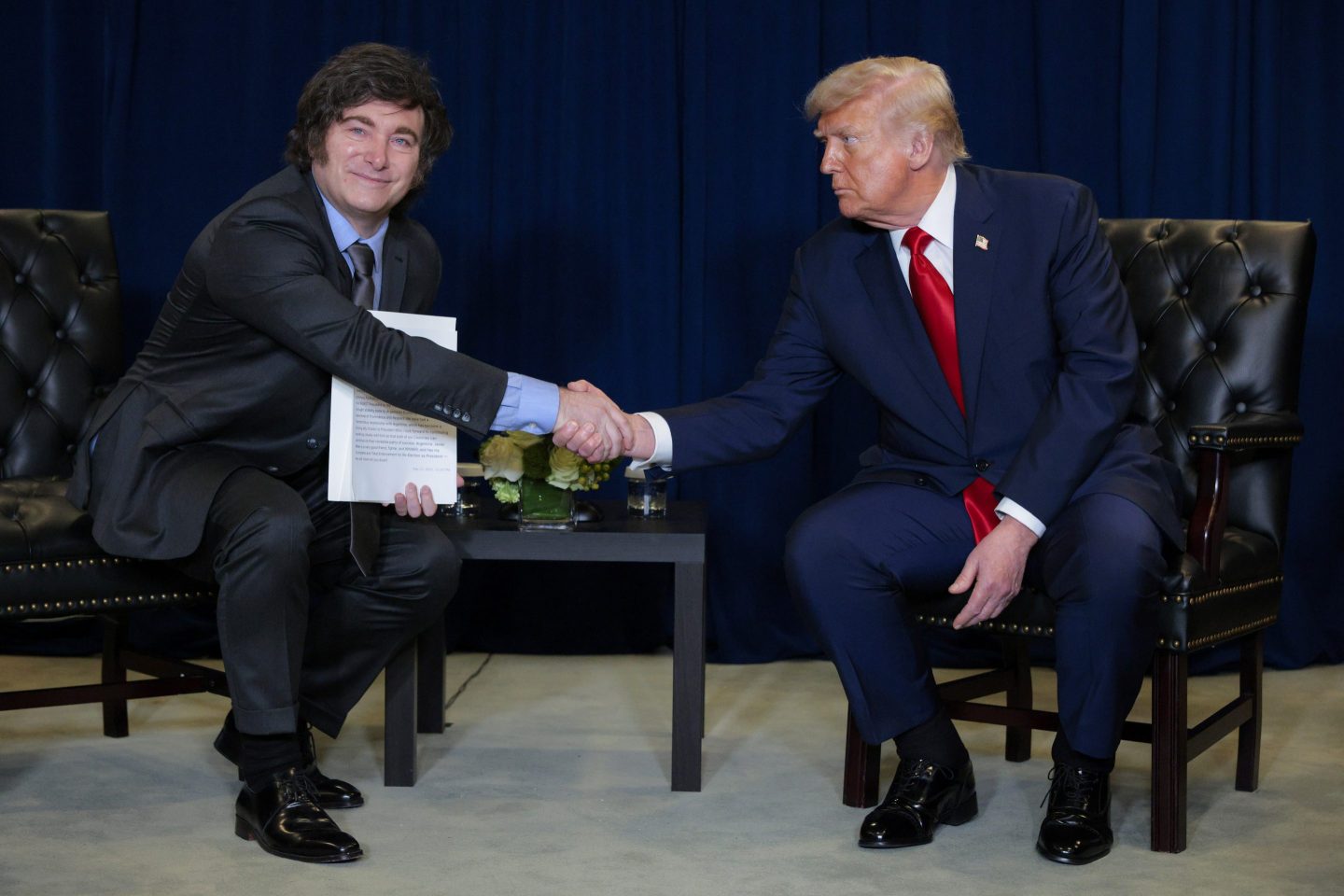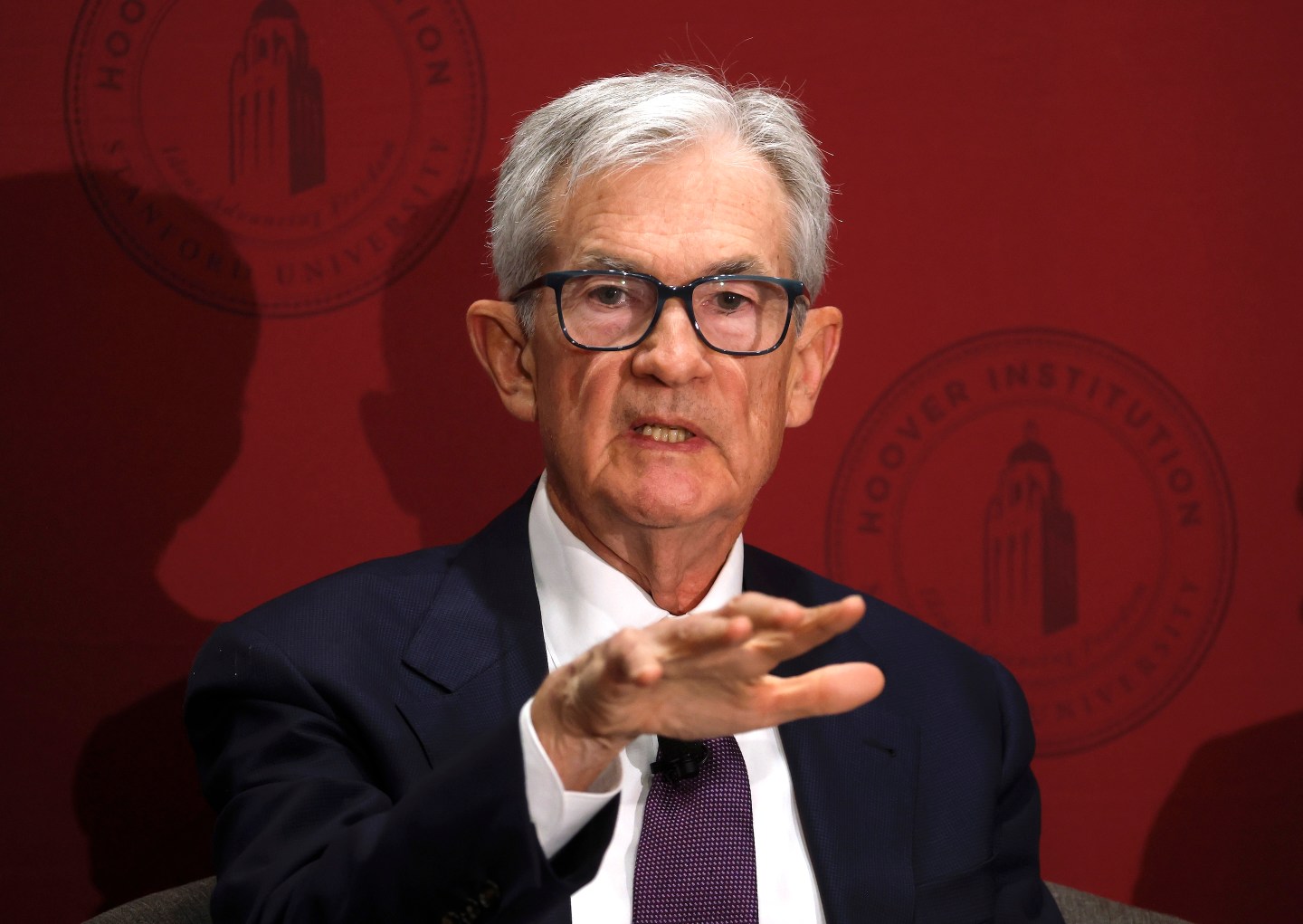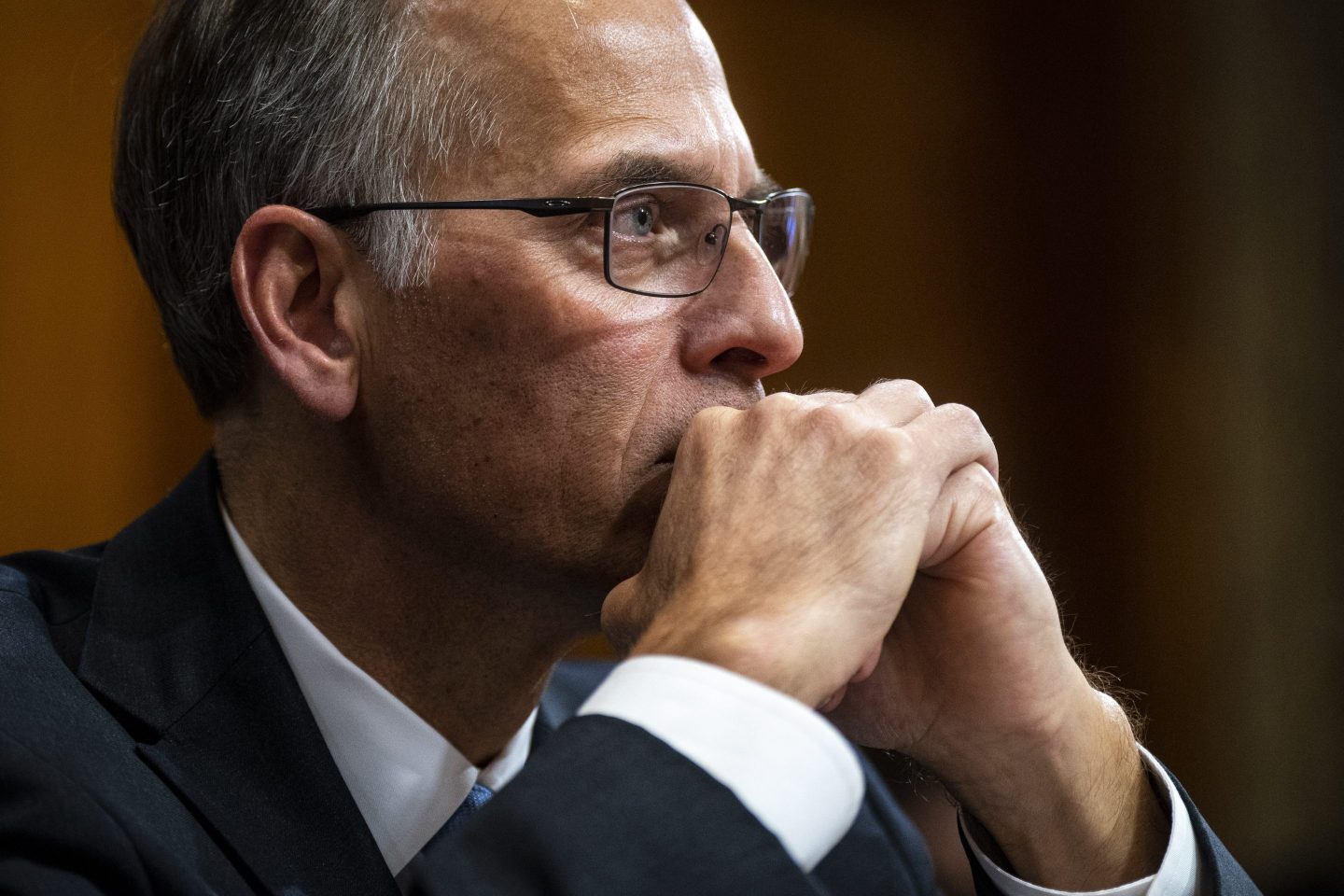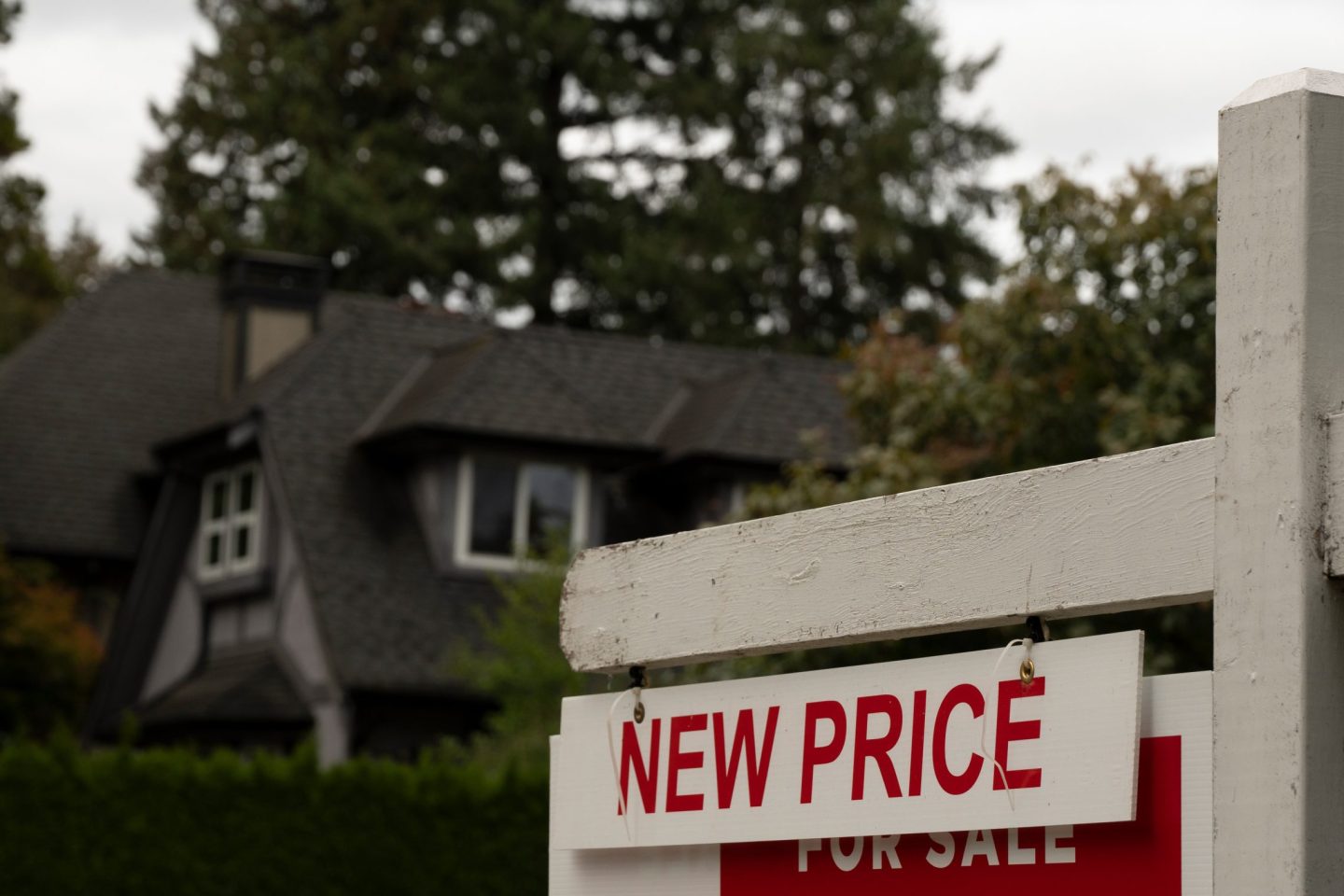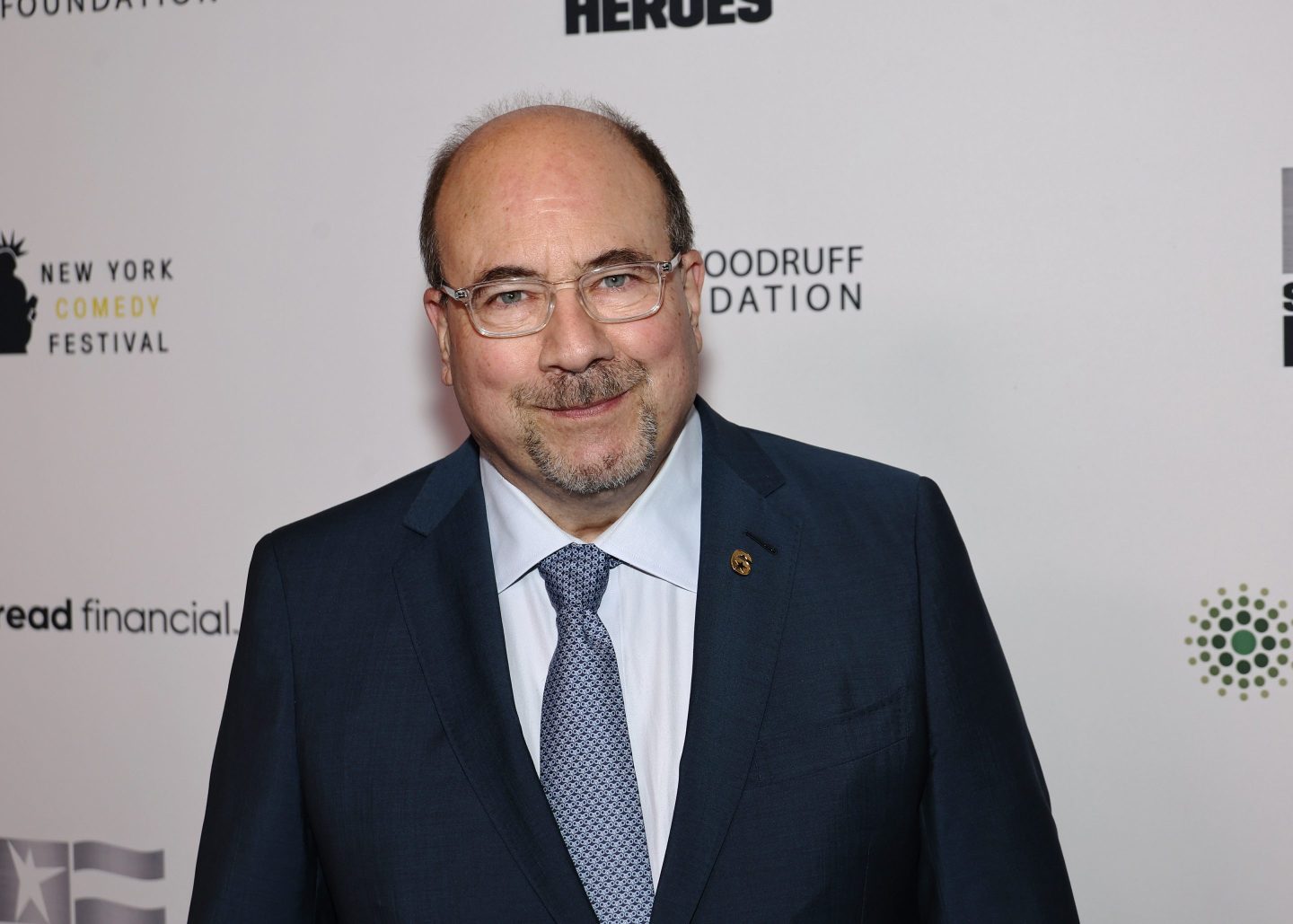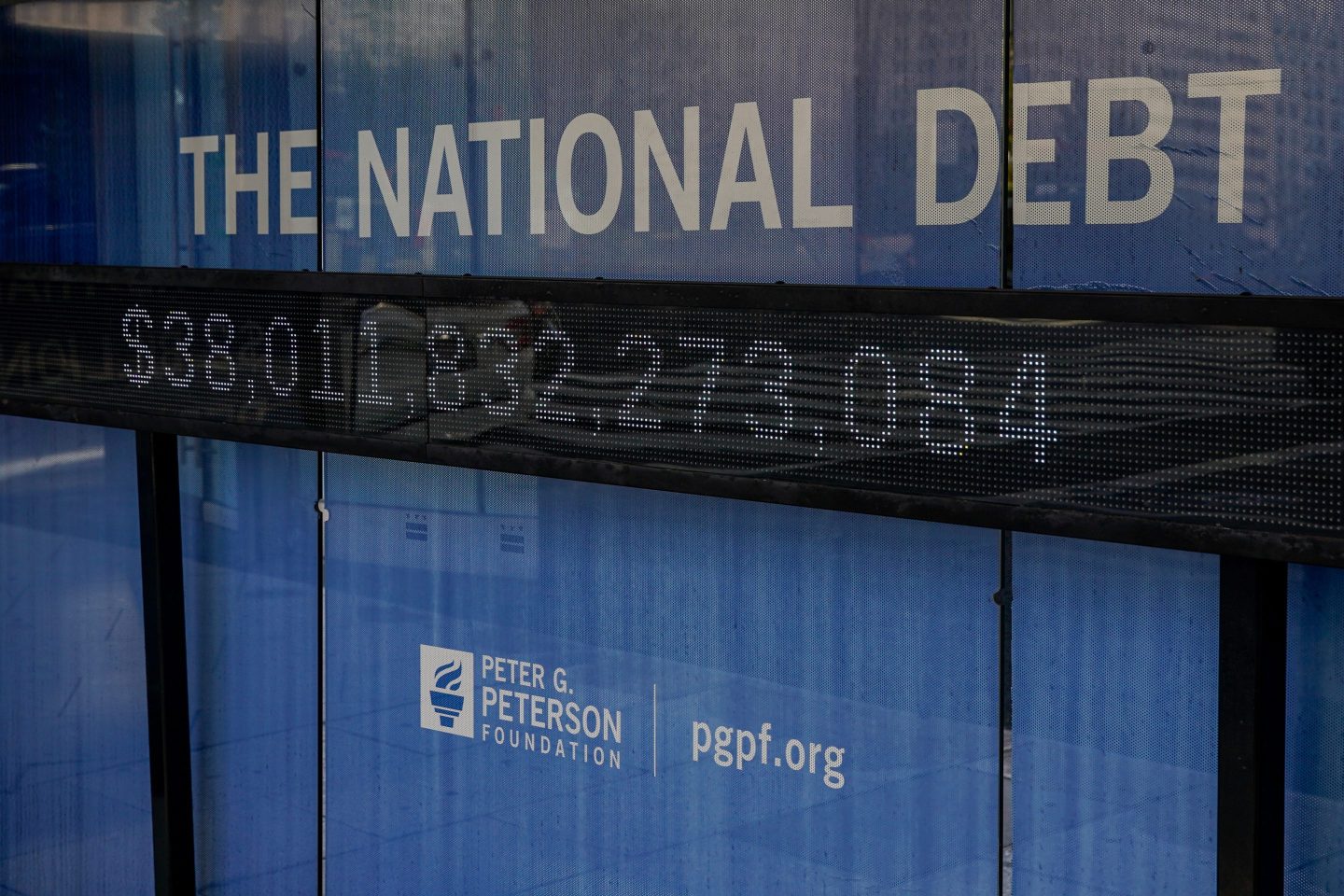The Trump administration is carefully weighing a campaign to rescue Argentina’s economy and its wobbling president, Javier Milei. The signal that the Trump team’s getting extremely serious about the move: It has engaged the renowned international “Money Doctor” to explain the template for shifting South America’s second-largest economy to the greenback.
The currency “MD” is Steve H. Hanke, professor of applied economics at Johns Hopkins University. Hanke’s the world’s leading authority on dollarization and other solutions that tie developing economies to the dollar, a status he’s achieved both via his voluminous academic writings on the subject and hands-on implementation as an adviser to sundry governments that have effectively shelved discretionary domestic monetary policies to recharge their economies and cure rampant inflation.
In the past two months, the Trump administration has been quietly tapping Hanke’s expertise in a series of high-level meetings, Fortune can exclusively report. According to the Money Doctor, the administration’s interest in a plan that would substitute the dollar for the flailing Argentine peso has greatly intensified in recent weeks as Milei’s political fortunes have weakened. Keeping Milei’s agenda advancing is a crucial tenet of Trump’s foreign policy agenda. Treasury Secretary Scott Bessent praises Milei for marshaling an overhaul that’s en route to reversing “100 years of decline” and saving that nation from the “failed state” tarmac where it was headed before he took charge. For Bessent, Milei’s Argentina will prove a “beacon” for South America, proving that super-capitalism is the ticket to prosperity at a time when all the continent’s other major nations, notably Brazil, Colombia, and Venezuela, have leftist governments that now reign supreme.
Marco Rubio, America’s top diplomat, has shifted the U.S. focus on international affairs far more heavily toward South America than the stance under previous administrations, arguing that the region has been wrongly neglected. Rubio is campaigning hard to halt the “pink tide” of socialist-style economic policies flooding our backyard of Latin America. Rubio, the son of Cuban immigrants, is also striving to curb China’s growing influence in Latin America. In both those crusades, Milei has emerged as the administration’s standard bearer.
Plus, the two heads of state are locked in an intercontinental bromance. Trump has lauded Milei as “my favorite president” and “a fantastic and powerful leader,” while the Argentine applauds Trump’s MAGA trade and immigration initiatives for “saving the world from catastrophe.” Notes Hanke, “Trump’s likely looking at how to get his pal Milei out of hot water. That’s why the administration is looking into ways that would assist Milei in delivering on his main campaign promise—the promise to dollarize Argentina.”
What follows is Hanke’s account of the administration’s growing interest in advocating the dollarization path, a course of action Milei has been unable to deliver on. The writer talked extensively with the economist, and Hanke shared with Fortune the analytical papers on the virtues of dollarization and the mechanics on getting it done right that he provided the Trump brain trust.
The Trump team summons the Money Doctor for high-level meetings on dollarization
On Aug. 13, the administration hosted Hanke to provide a briefing on dollarization and other policies that would tie foreign nations’ currencies to the dollar. The setting: a conference room at the Eisenhower Executive Office Building adjoining the White House. Hanke scored the invitation as the world’s leading authority on the two regimes that essentially make the dollar the coin of the realm for foreign nations: dollarization and its close cousin, “currency boards.” It’s clear why they called in the Money Doctor. Hanke harbors more hands-on-the-levers, on-site experience in the field than any other expert by far, having advised countries in Latin America, Europe, Africa, and Asiaon strategies linking their currencies to the dollar. He actually got started in Argentina by helping establish a variation on a currency board in 1991, helped design and impose that construct in Estonia (1992), Lithuania (1994), Bulgaria (1997), and Bosnia-Herzegovina (1997), and later advanced dollarization in Montenegro (1999) and Ecuador (2000).
Present were about 15 high-ranking economists and specialists in international affairs from the Council of Economic Advisers, the National Economic Council, and the National Security Council. All of the attendees were prominent staff members who serve in the Trump administration. “It morphed into the equivalent of a graduate seminar,” recalls Hanke. “The attendees were highly professional and well prepared, and I answered all their technical questions on the history of dollarization, my experiences in the field, and how it works. It was obvious that somebody on high in the White House had ordered all these high-level staffers to get on the case.”
At the time, says Hanke, the participants seemed primarily interested in promoting widespread global usage of the dollar. “That coincided with the administration’s support for dollar-based stablecoin tokens,” he avows. “The tokens are exchangeable for dollars, requiring the issuers to hold dollar reserves in U.S. Treasuries equal in value to the coins they sell, as stipulated in the new GENIUS Act.” He notes that currency boards in particular look attractive to the administration for the same reason: They increase demand for Treasuries. Under a dollar-based currency board, a nation keeps its own coin of the realm but guarantees that its currency is fully backed by dollars and freely convertible into dollars at a fixed exchange rate. Hence, a currency board currency—like the Hong Kong dollar—must be fully backed by dollar reserves. A spread of currency boards would increase demand for U.S. government bonds, potentially lowering interest rates.
At that meeting, Hanke identified what he considers to be two prominent candidates for dollarization that he has worked on extensively, Lebanon and Argentina.
On Aug. 28, the administration brought Hanke back to Washington for a second meeting. This time, the attendees included not only officials from the same three groups who attended the first confab, but also a representative from the U.S. Treasury. Alsopresent: a top political figure from the White House whom Hanke declines to name. “This person volunteered information that confirmed what I’d already concluded, that there was a group high up in the administration that were pro-dollarization and wanted the professionals to dig into the subject matter,” says Hanke. The second meeting focused on the technical details on implementing dollarization andthe establishment of currency boards. The participants were particularly interested in getting Hanke’s take on whether dollarization would require action or participation by the U.S. The Money Doctor stated that historically, dollarizations, including thosein both Ecuador and El Salvador, haven’t required direct U.S. government involvement. But Hanke alsoreviewed certain scenarios that would involve a role for the U.S.
Milei’s stunning electoral loss heightens the urgency to save the agenda Trump so prizes
At the end of the meeting, the officials said they’d send Hanke some “homework assignments.” These centered on the technical requirements of implementing currency boards and dollarization regimes. As part of his homework, Hanke provided a systemic analysis that narrowed a list of 239 potential candidates to the 50 most promising choices. Near the top of the roster ranked Argentina.
On Sept. 8, 11 days after the follow-up gathering, Milei’s political stock took a sharp tumble, and the pressure on the administration to rescue their like-minded ally ratcheted up big-time. That day, Milei’s LLA Party suffered a crushing loss in the Buenos Aires provincial elections to the center-left Peronists. The result sounded alarms for the legislative race scheduled for Oct. 26, especially since the Buenos Aires district encompasses around 40% of the nation’s voting population. In the two weeks that followed, the peso tumbled8% against the dollar.
On Sept. 22, Bessent responded by unveiling a potential $20 billion “swap”arrangement in whichthe U.S. would swap hard dollar cash for Argentine dollar-denominated bonds. The Treasury secretary added, however,that all options for rescuing this “systemically important ally” remain on the table. That news, alongside the Milei government’s emergency action deploying dollar reserves to buy pesos, briefly sent the beleaguered currency higher. The reprieve was short-lived: Starting Sept. 28, the peso resumed its losing streak, retracing almost all the gain following the Bessent announcement. For the White House, the message was dire. The past record showed clearlythat pledges of U.S. support and more IMF bailouts wouldn’t work. Unless something bold happened, and happened fast, an anti-Milei wave appeared to be building that would scuttle his free-market reforms.
In fact, those reforms, though still in their early stages, were yielding impressive results. Elected in November 2023, Milei secured hard-won victories that partially reversed decades of excessive government spending and stifling regulation. He had lifted a welter of price controls including those on rental apartments in Buenos Aires and imposed fiscal discipline that made Argentina the only member of the Group of 20 countries running a budget surplus. Over the past four quarters, he had lifted the economy from mostly shrinking in the years before he took office to a trajectory of modest expansion.
The rub: His plan hasn’t gone nearly far enough, leaving Argentines in such tough straits that voters are turning against him. Milei inherited consumer prices soaring at 200%, and though he’s done yeoman’s work bending the curve downward, inflation is still roaring at an annual rate of 34%. Interest rates on consumer loans tower at 70%.
At the two prior meetings in Washington, Hanke strongly recommended dollarization as the best course for Argentina, a remedy he’s been advocating since 1991. That solution is the ultimate shock therapy for putting the dollar in command for a foreign nation. Once again, in adopting a currency board, a country keeps its own currency and central bank. In dollarizing, the name tells the story. The nation takes the entire cure by eliminatingall domestic coins and bills in circulation. Citizens simply bring their local money to the central bank’s offices, and receive dollars in their place, at a fixed exchange rate. The central bank gets mothballed. The freedom to set monetary policy that leads nations such as Argentina to print far more money than it’s producing in goods and service, triggering big inflation, exists no more. The adopting country’s inflation and interest rates tend to mirror those in the U.S., dropping from the lofty levels that pounded their economies into instability when their central banks held sway.
In running for president, Milei made dollarization the centerpiece of his economic blueprint. But after Milei took office in December 2023, he put his chief campaign promise on hold. Milei instead relied on the IMF’s guidance for promoting fiscal discipline. Despite significant progress, that approach hasn’t worked nearly well enough to save Milei from the threat of devastating electoral defeats that would undermine even this partially achieved free-market progress, eventually sending Argentina the “pink tide” way of Brazil, Colombia, and Venezuela.
According to Hanke, Milei’s big loss in the Buenos Aires contest and the acceleration in the peso’s decline confirmed the Money Doctor’s warning that the inevitable lure for mismanagingthe peso was Milei’s Achilles’ heel. At the start of October, Hanke responded to the administration’s request for further insights into the theory and practice of dollarization by providing a 20-page document titled “Notes and Reflections on Ecuador’s Dollarization: A Template for Argentina.” In that piece, the Money Doctor related in detail how the Ecuadorian economy had been in much worse shape than Argentina’s is now when he helped shape the government’s plan for dollarization that took hold in 2000. Despite opposition from President Rafael Correa, who tried to dismantle the regime many times, it has remained highly popular and stayed in place for the past quarter-century. As a result, Ecuador has avoided the extraordinary inflation that has afflicted so many nations in South America, including Argentina. Today, Ecuador’s inflation rate is now hoveringeven below U.S. levels.
In fact, Hanke’s advocacy for the dollarization cure for Argentina arises in part from Argentina’s flawed convertibility that he predicted would, and did, fail a quarter-century ago. As Hanke writes in “Notes and Reflections,” he advised President Carlos Menem in 1989 on devising an orthodox currency board to halt Argentina’s hyperinflation. At the request of Menem, he wrote a book, Banco Central o caja de conversión, published in Buenos Aires, that explained the program.
“The convertibility plan actually enacted,” he says, “amounted to something akin to currency board light.” Hanke relates that it was riddled with loopholes that handed the BancoCentral de la República Argentina discretionary monetary powers. In contrast, a conventional currency board has no monetary freedom. As early as October 1991, Hanke wrote in the Wall Street Journal that the system would eventually fail, which it did. In 2002, Argentina abandoned the convertibility system, and the peso collapsed as the BCRA reflated the money supply by printing pesos. That move set in motion two decades of big inflations, serial currency and banking crises, and debt defaults. The international institution charged with the rescue mission, the IMF, arrived at the scene, as it has repeatedly done. Since Argentina joined the IMF, the organization charged with aiding financially troubled countries has launched no fewer than 23 programs to rid Argentina of its chronic peso problem, to no avail. The upshot: Argentina now owes the IMF $41.8 billion, four times second-ranking Ukraine, to stand as its largest deadbeat.
In the “Notes and Reflections” paper, Hanke argues that Argentina’s problem is the peso, and the BCRA’s continued goosing of the money supply that accounts for the still excessive pace of price increases. He states that Argentines themselves prefer dollars to pesos. That’s why they’re plowing so much of their money, including bailout funds flowing from the IMF, into dollar investments and accounts. “They own more liquid dollar assets than liquid peso assets—including many dollar deposits offshore, to avoid seizures of the kind Argentina has imposed from time to time,” he writes. “If Argentines really wanted to hold pesos, there would be no need for exchange controls to limit their holdings of dollars.” So, to prevent another experiment like the convertibility system that eventually exploded, Argentina should junk the peso and the BCRA. Concludes Hanke in his account presented to the administration: “Dollarization is the lowest-cost solution for Argentina’s government, the U.S. government, and the IMF.”
Contrary to critics, Hanke has run the numbers and finds that dollarization is totally feasible, right now. The key, he says, is that the government holds more than enough dollar reserves to redeem all peso notes and coins in circulation, as well as bank reserves. Checking and savings deposits, as well as all other assets and liabilities in Argentina, would simply be re-denominated in dollars at a chosen fixed exchange rate. How would Argentina establish that exchange rate? Hanke recommends allowing the peso to float for around 60 days, enabling market forces to determine its actual worth in terms of dollars. This is specifically the procedure Hanke adopted in Bulgaria when he established a currency board there in 1997.
In our conversations, Hanke noted that one of the primary arguments against dollarization is that it deprives a nation the freedom to “fine-tune” its economy in adjusting interest rates and employment across economic cycles. “The critics argue that the cycles aren’t the same in Argentina as in the U.S. Are they kidding?” asks Hanke. “If fine-tuning worked in Argentina, the inflation rate wouldn’t have been 200% when Milei took command and almost 35% today. People are paying 70% on consumer loans, and the critics are worried about the business cycles not being the same?”
Hanke has learned that Milei, up to this point, has felt boxed in by opposition from the IMF. But, he observes, that might be changing. “The professionals in the Trump administration are digging deeply into dollarization both as a cure for emerging-market currency problems, and as a means to promote the international use of the U.S. dollar, perhaps using Argentina as the first case,” says the Money Doctor. “It would create a confidence shock and economic boom in Argentina,” adding that a resurgent Argentina would create a powerful example for its neighbors in South America.
Hanke adds that if the Trump administration advocates dollarization, the IMF will fall in line since the U.S. is its largest shareholder. “Trump is the whole ball game here,” says Hanke. “If he moves, the IMF will move with him. With Trump’s support, Milei would fulfill his campaign pledge by dumping the peso that’s shackling the economy and eroding his political support, and move ahead with dollarization.”
The Trump administration hasn’t commented publicly on dollarization. Hanke hastens to add that the administration hasn’t made any definitive decision on whether to back the strategy. But it might be Trump’s next big thing. It could be the ticket to saving his buddy and establishing a free-market model that could turn back Latin America’s pink tide.
